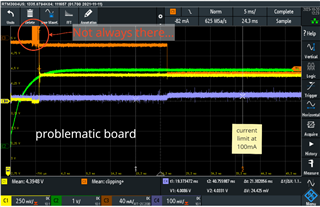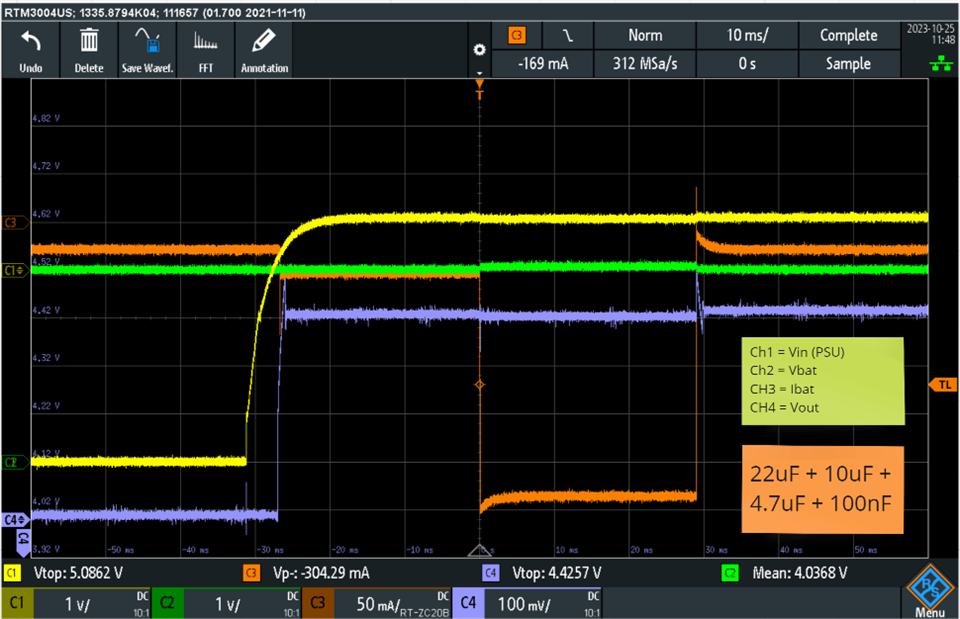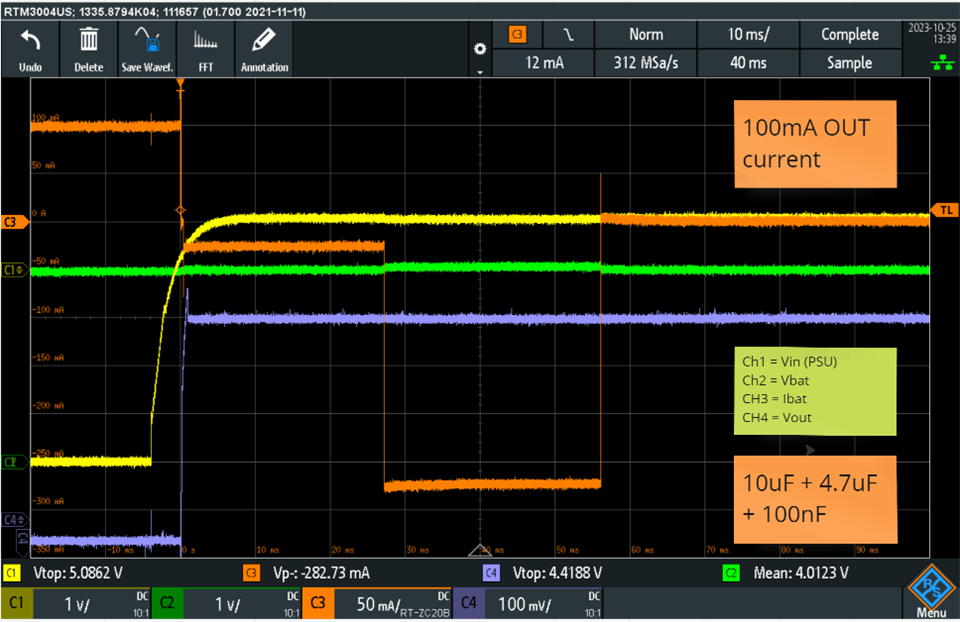Hello,
I have a design built around the BQ24232RGTT IC. I have identified an occasional bug that results in the battery charger not working (no current output).
I measure no current going to the battery and measure the following voltages on the IC's pins:
IN : 4.97V
OUT : 4.40V
BAT : 3.72V
ISET : 0V
ITERM : 0V
TMR : 4.93V
ILIM : 0V
EN1 : 0V
EN2 : 4.30V
CE : 0V
TS : 0V
I performed the same measurements on a working device with the following results:
IN : 4.97V
OUT : 4.40V
BAT : 3.72V
ISET : 2.22V
ITERM : 3.58V
TMR : 4.78V
ILIM : 0.55V
EN1 : 0V
EN2 : 4.28V
CE : 0V
TS : 0.76V
The underlined measurements differ between the working and not working versions. In both cases, the hardware design is exactly the same with programming resistors as follows as shown in attached schematic:
ILIM : 3.16kOhm between ILIM and GND (current limit set at 0.484A)
ITERM : floating
ISET : 3kOhm resistor between ISET and GND (290mA fast charge current)
TMR : floating
TS : 10kOhm fixed resistor between TS and GND
CE is pulled low, EN2 is pulled high and EN1 is pulled low with 10kOhm resistors
So far, this has only occurred on two boards with no clear indication as to why the problem started. On one board, the device worked properly after changing the faulty IC and on the other, after waiting a few hours with 5V on IN pin, it started working again, but after a few charge cycles the issue reappeared. Also, even if there is no charge current both LEDs are on CHG and PGOOD pins.
The problem seems to be with the internal power supply of the IC. I would like to know if this is a known bug and what causes it, as well as any possible fixes.
Thank you,
Alex
-
Ask a related question
What is a related question?A related question is a question created from another question. When the related question is created, it will be automatically linked to the original question.










